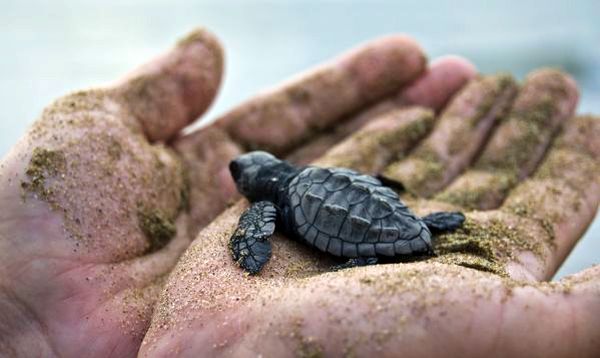Riviera Nayarit, Mexico - Every June, sea turtles start arriving on the shores of Riviera Nayarit to nest their eggs. Forty-five days later, their eggs begin to hatch attracting visitors from all over looking to experience the magic of life first-hand by taking part in the Banderas Bay region's turtle hatching season.
What a moving experience it is to hold a sea turtle hatchling in our hands! In Nuevo Vallarta, Playa Tortugas, and Guayabitos you can live the experience and feel a turtle's tiny flippers striving to make their way forward before you place it next to the surf.
Assisting at a turtle release in Riviera Nayarit is one of the most endearing activities one can do in our destination. It's also possible to witness a turtle coming out of the water to lay its eggs in the sand, and experience the miracle of life.
The best part is that you don't have to get away from the comfort and fun to marvel at one of nature's great events, as even some of the most developed beaches in the region are registering a large number of sea turtle arrivals.
Every year between June and December, hundreds of sea turtles arrive at Riviera Nayarit's beaches - from Boca de Teacapan to Nuevo Vallarta, spanning from the most remote beaches to the beaches in front of the most luxurious hotels - to lay their eggs.
Eight sea turtle species inhabit the world's oceans, and the Olive Ridley is the most common species to arrive at our beaches. However, with a little luck it is possible to find a leatherback turtle. Regardless of which one you find, volunteering to patrol the region's beaches in one of the camps supervised by professionals will change your life forever.
The experience simply cannot be missed, and in many cases all you have to do is stay up one whole night, sometimes just a few feet away from your room, to be able to experience how these turtles lay their eggs. Once the incubation period is over and the eggs hatch, you can be one of the lucky few that release the little turtles.
Nothing compares to witnessing the start of a new life and the struggle for survival, framed by a unique sunset. This is the beginning of the journey for these tiny creatures that will have to overcome all sorts of obstacles to reach adulthood.The tickling their flippers produce on the palm of our hands is transferred directly to our heart when experts explain that the one we're holding in our hands will probably never make it back to this beach.



